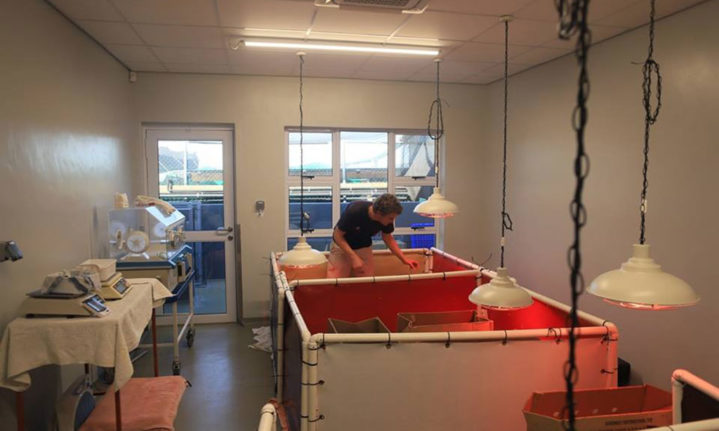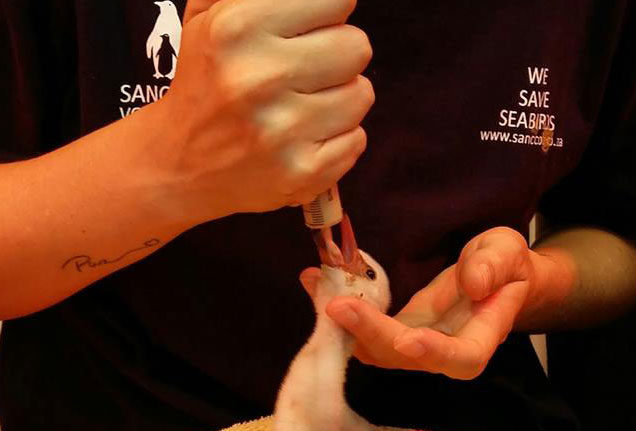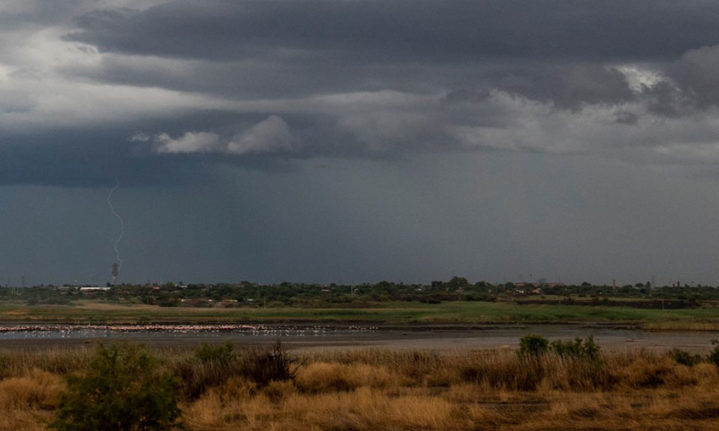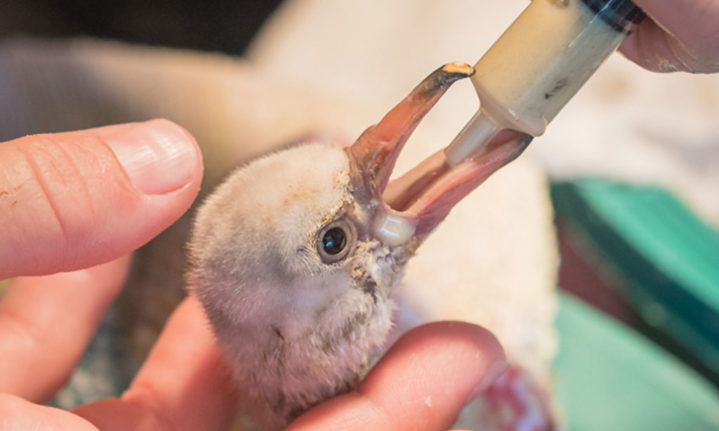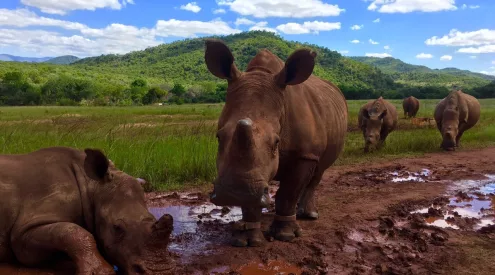The thousands of lesser flamingo chicks that were rescued in Kimberley recently are in safe hands and growing strong – including those still at the Kamfers Dam. While the fate of the dam water levels remains uncertain, the endangered birds are making the most of what they have.
After stationing their experts at the dam for the past week, BirdLife South Africa has declared that there is not a ‘state of emergency’ at the dam.
No further rescues need to be performed as the flamingos are still incubating eggs and feeding and protecting almost twice as many chicks. Chicks at the dam have been seen practicing to fly and filter feeding, a sign they are developing normally.
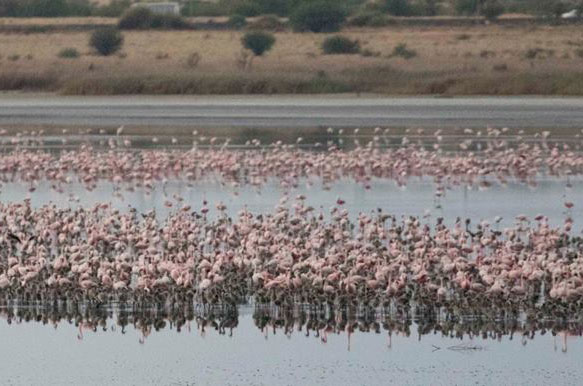
Lesser flamingo adults and chicks at the Kamfers dam on 11 February 2019. Chicks have been seen practicing their filter feeding skills, a sign that they are developing. Photo: Mark Anderson
Water levels have risen slightly thanks to recent rains and security personnel from Ekapa Mining, which sponsored the building of the breeding island, are monitoring the site to prevent further disturbance.
BirdLife SA will be working with governmental as well as non-profit organisations to monitor the dam and make sure water levels remain consistent.
Birdlife SA CEO Mark Anderson has questioned the initial apparent need to rescue chicks in the first place. Nevertheless, he thanked volunteers and agencies for their swift and efficient reaction to the apparently dire situation of exposure to heat and predators.
Read Getaway’s initial reporting about the rescue operation: Over 1,000 baby flamingo chicks rescued in Kimberley
‘It is never easy to decide when to step in or let nature take its course,’ says Professor Peter Ryan, the director of the FitzPatrick Institute of African Ornithology at the University of Cape Town. He says it seems to have been a premature action to remove chicks and eggs as the situation seems to have improved and the site was not completely abandoned.
Ryan doubts that many of the rescued birds will survive to contribute to future generations and the efforts to retrieve these chicks may have caused other flamingos to abandon their breeding attempts.
‘Ultimately, flamingos have evolved to accommodate their risky breeding strategy; they are bound to fail from time to time when water levels get too low (or too high). They offset these bad years by having high adult survival, and investing in breeding attempts spread over many years,’ says Ryan.
This is not the first time this nesting area has been under threat. Concerns about water quality, inconsistent water levels and human disturbance have been voiced since 2008. Between 2012 and 2016, the nesting site saw both a flood and a dry dam. For the last two breeding seasons the breeding activity has moved away from the artificial island to shallow waters along the shore.
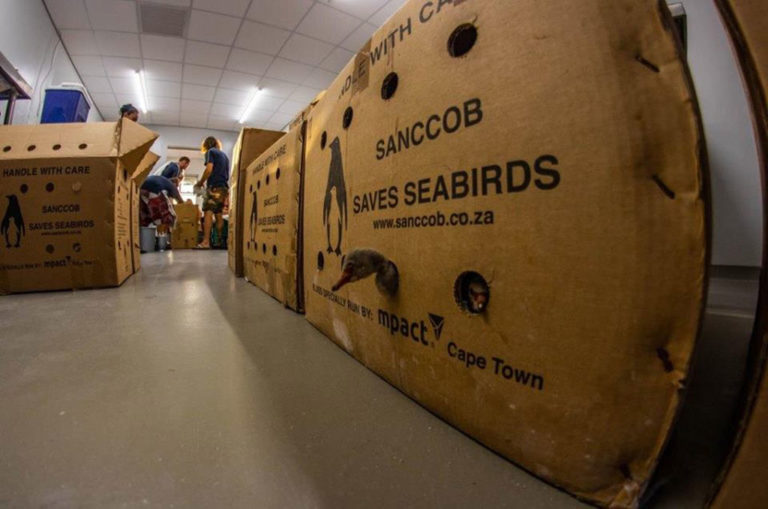
Lesser flamingo chicks arrive at the Southern African Foundation for the Conservation of Coastal Birds after being rescued from the nearly dry Kamfers dam. Photo: Supplied
Nonetheless, the majority of chicks which have survived thus far seem to be strong. The Southern African Foundation for the Conservation of Coastal Birds (SANCCOB) lost a large number of chicks in the first 48 hours after arrival as many were very young, weak and dehydrated.
However, the remaining 265 chicks are strong enough to need a new bigger enclosure where they can stretch their legs and experiment with their filter feeding abilities in shallow water. Some chicks remain in intensive care with around-the-clock care.
‘As with all hand-rearing, SANCCOB is hopeful that all birds will pull through and are doing their utmost to prevent further mortalities of the weaker chicks in the coming weeks,’ says Ronnis Daniels, the public relations officer of SANCCOB.
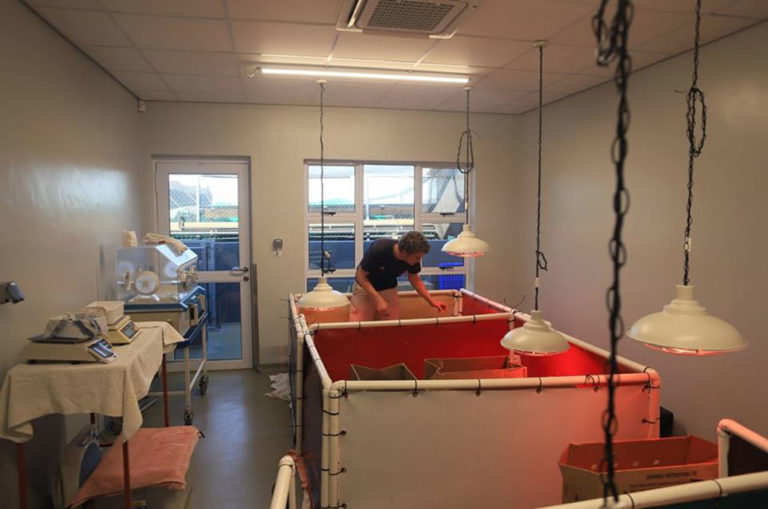
The Southern African Foundation for the Conservation of Coastal Birds is keeping some younger, weaker lesser flamingo chicks in an intensive care unit where they are fed by hand. Photo: Supplied
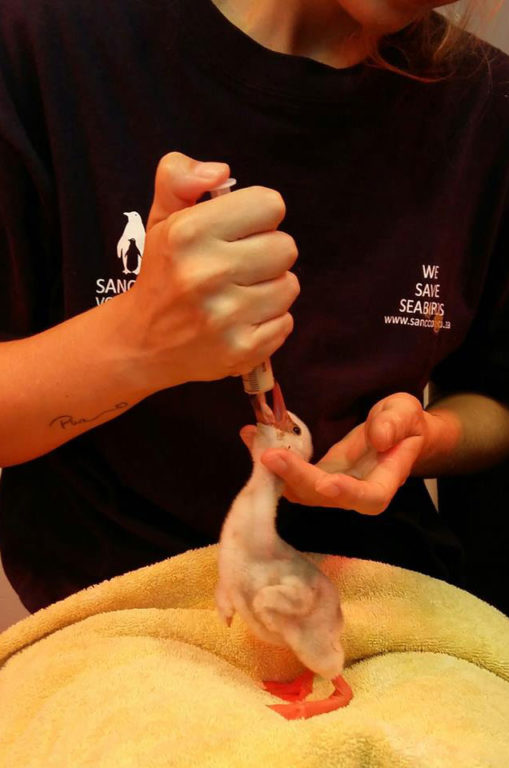
A lesser flamingo chick is fed a blend of shrimps, sardines and Nestum baby cereal stage 1. Photo: Supplied










